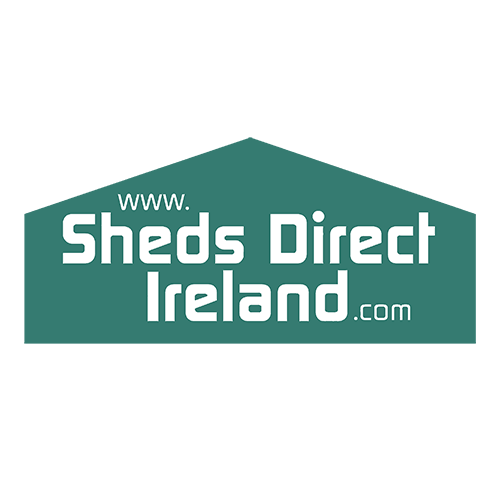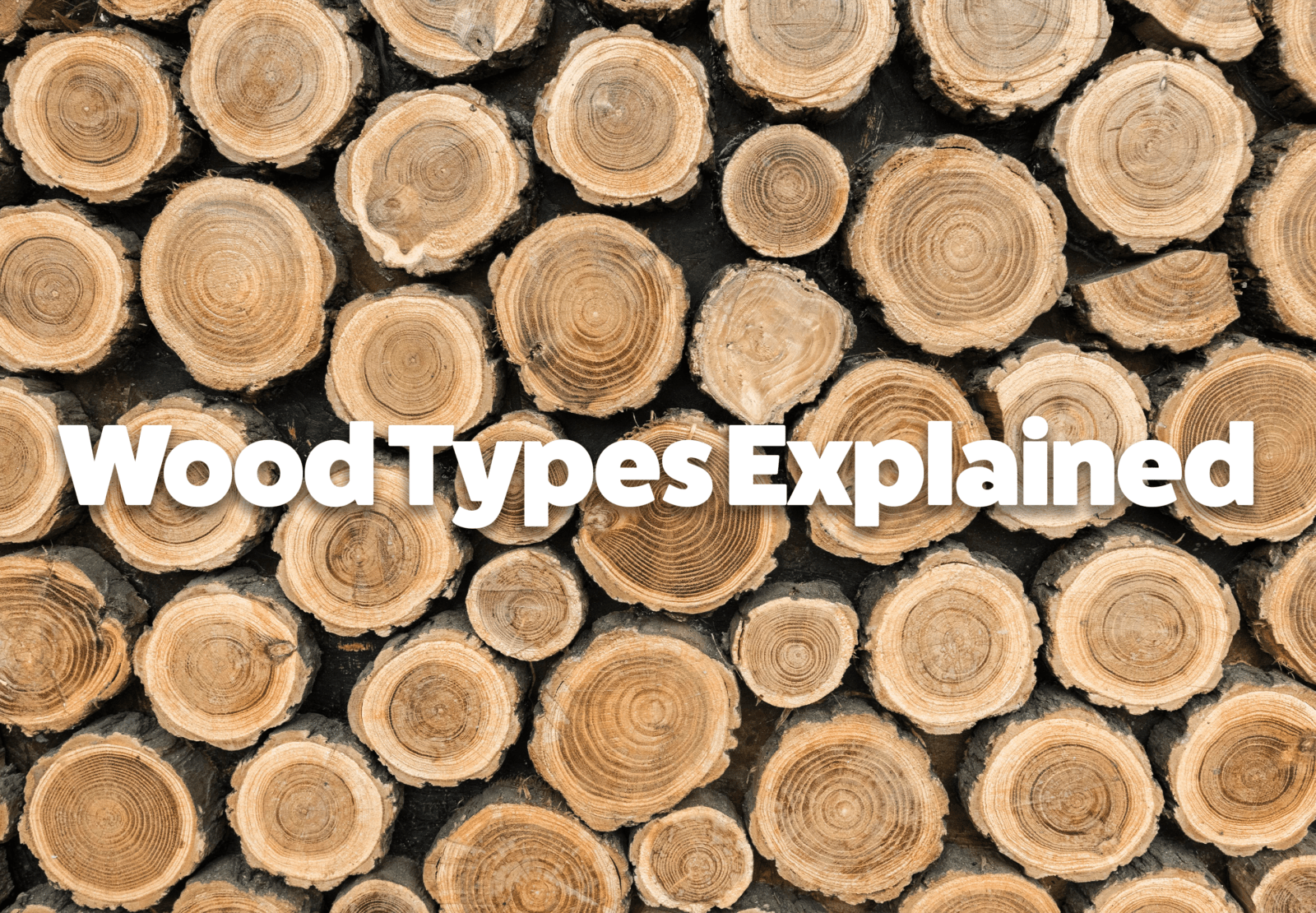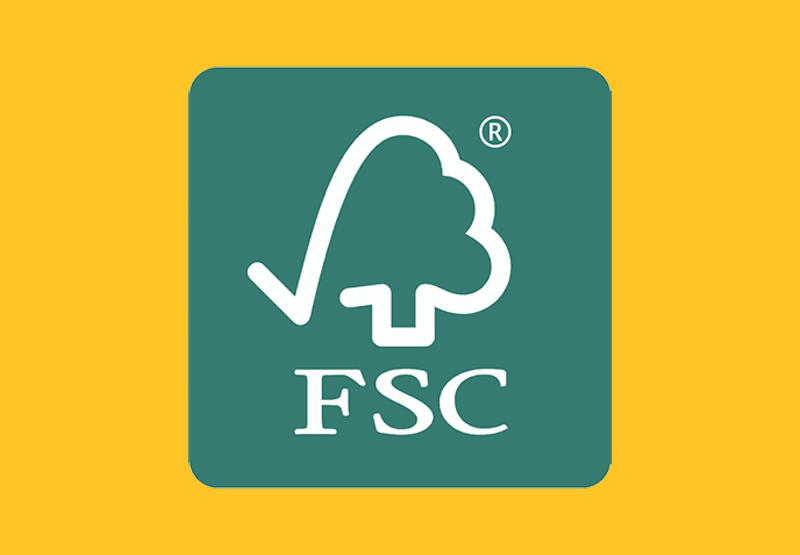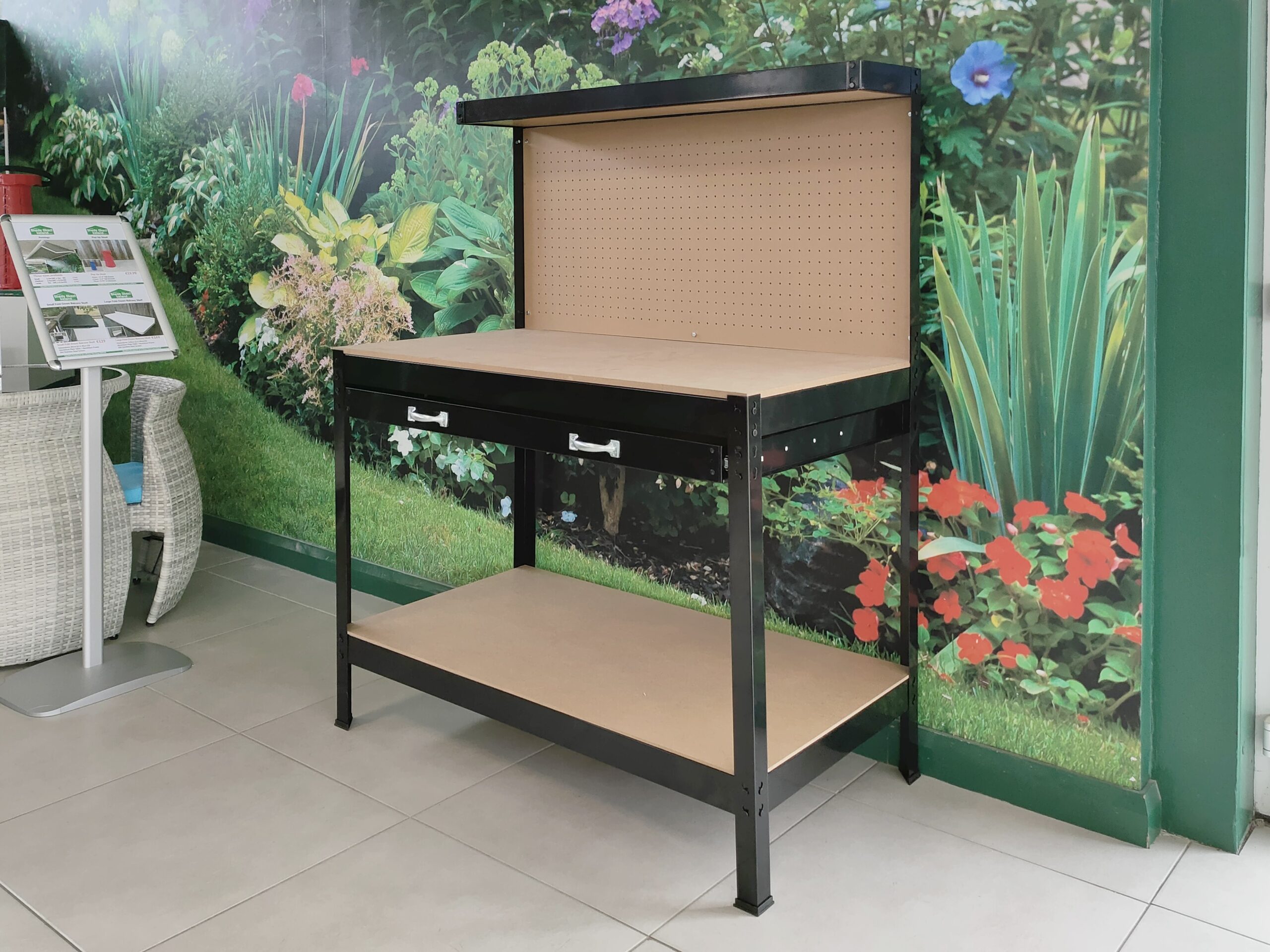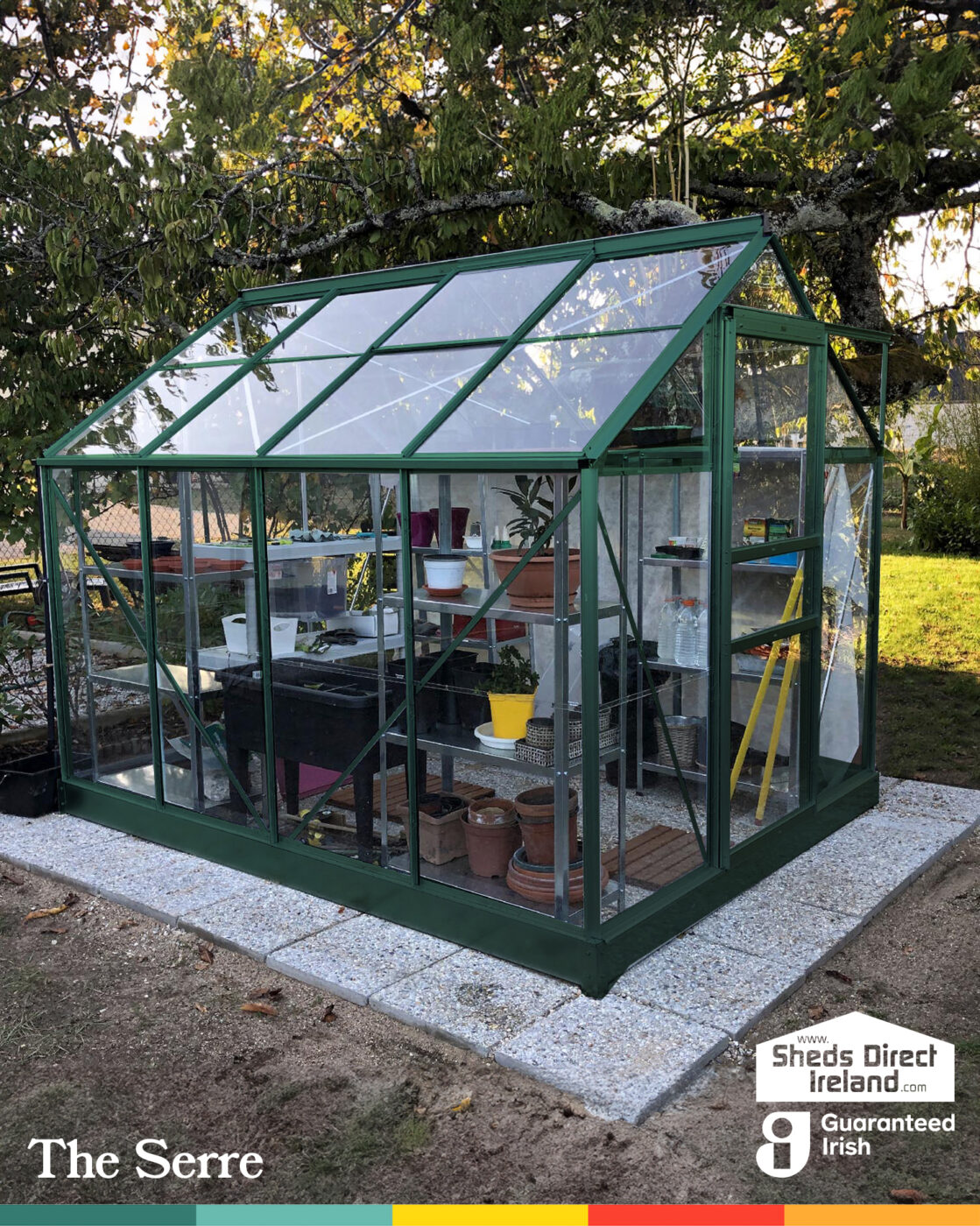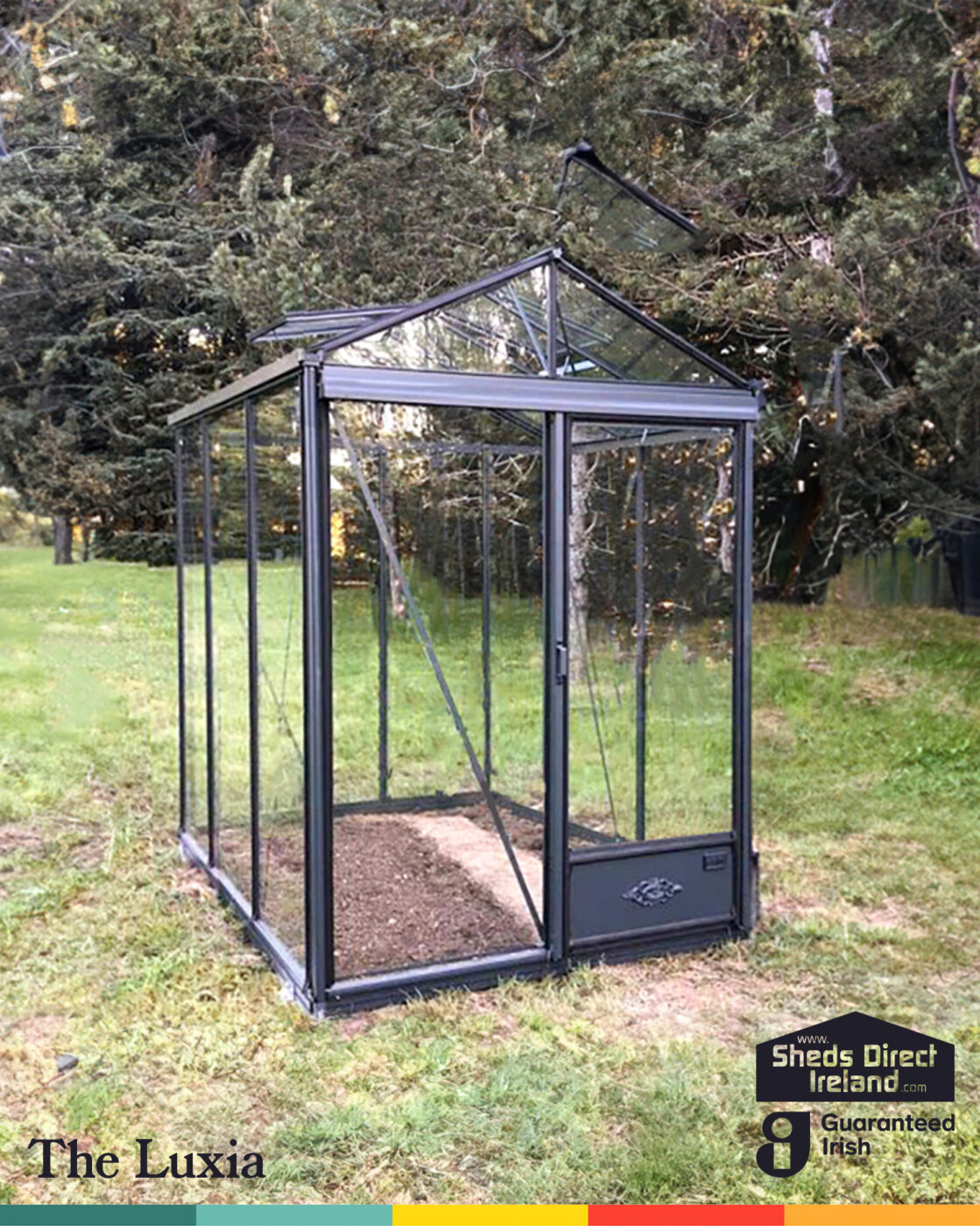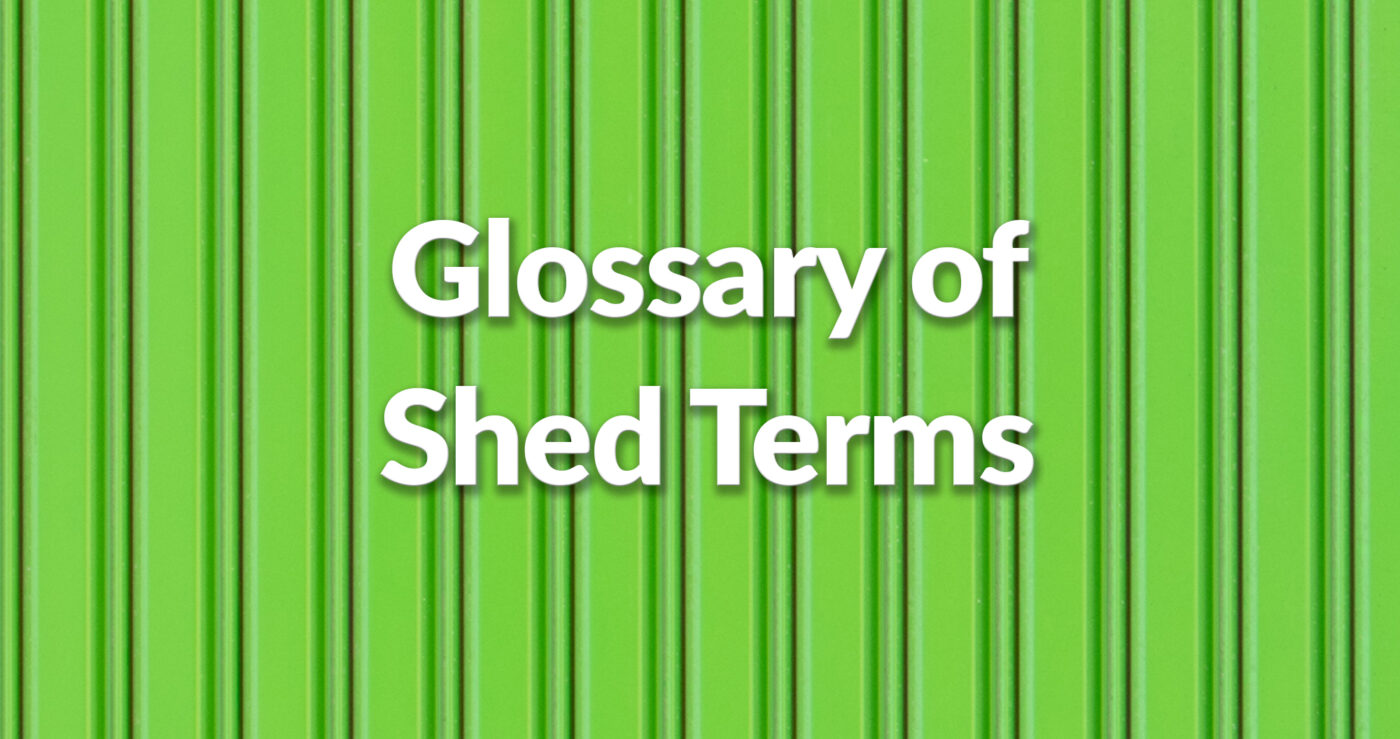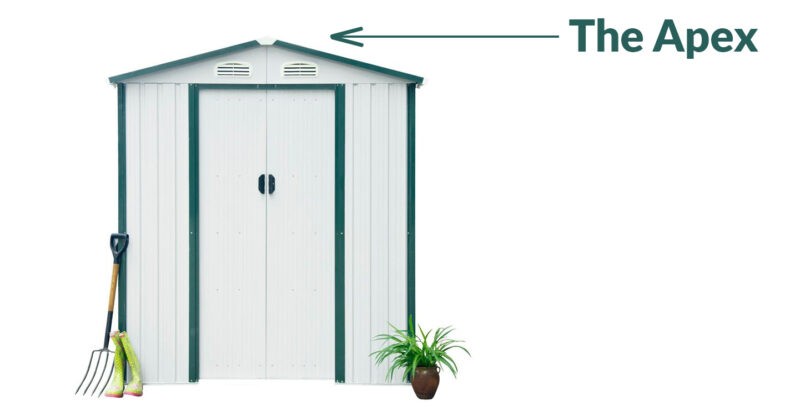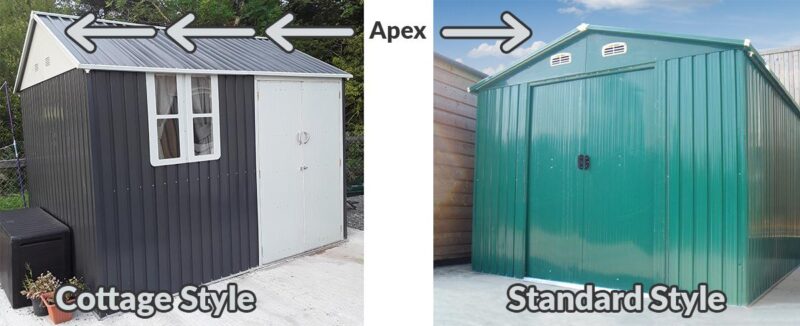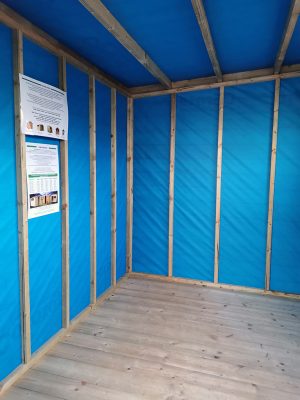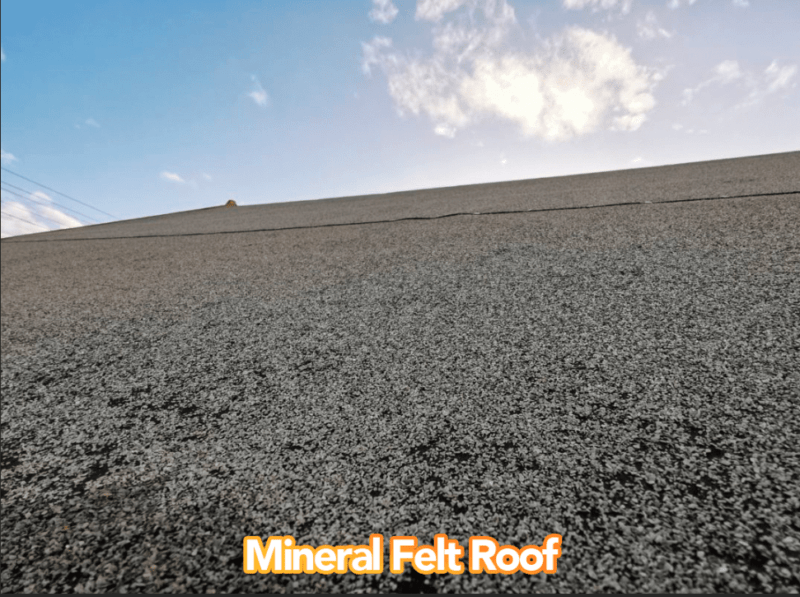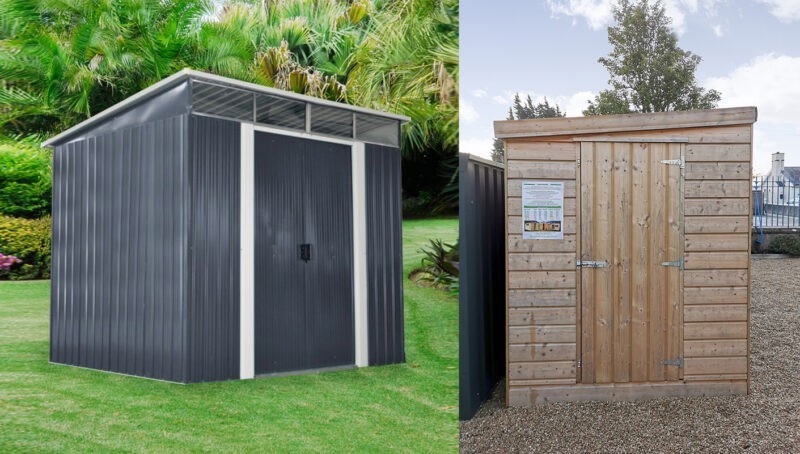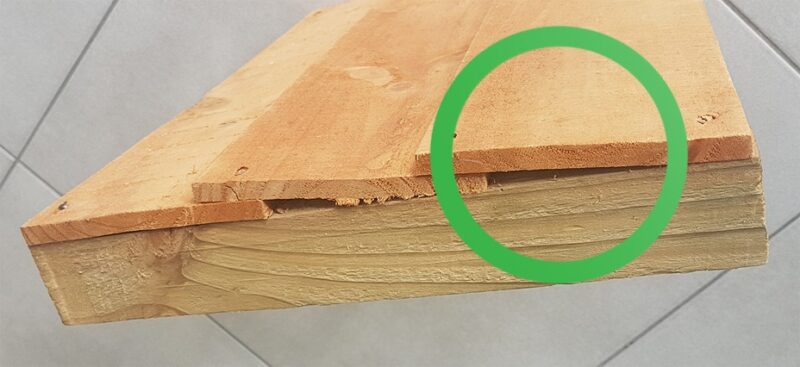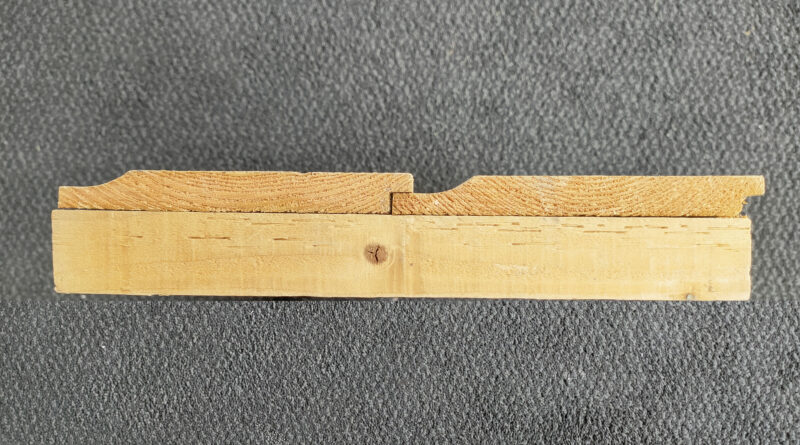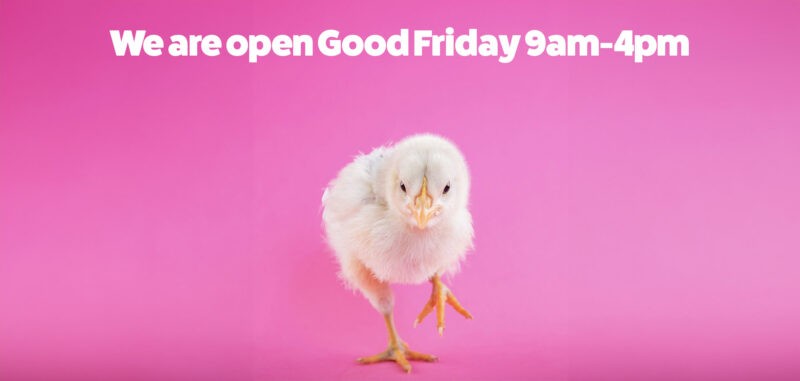How To
Glossary of Shed Terms
Glossary of Shed Terms
If you can’t tell your Apex from your Eves, we’ve got you covered. This handy guide will demystify all the technical terminology for those unfamiliar with them. Most of these terms are universal, however some are Sheds Direct Ireland specific, so if you’re browsing our sheds and are a bit befuddled, this is the place to get you sorted. If you can’t see a term that has you confused, message us and we’ll add it to this list asap!
This list is arranged alphabetically.
Anti-Con Roof Lining
An Anti-Con roof is available on our Heavy-Duty sheds only. These sheds do not have vents, so the anti-con roof is essential for them. What is an anti-con roof lining? It’s a fabric material that absorbs moisture and gradually runs it out through the top or sides of the shed. Some people call an anti-con roof a ‘felt’ roof or a ‘lined’ roof.
Apex
Generally, the Apex refers to the highest point of something. ‘Apex-style’ sheds are sheds which have a definitive, singular highest point, which is usually ‘V-shaped’. The alternative to an Apex shed would be a Pent Style shed.
Barrel Board
Barrel Board is just a style of wood. It is bulged like a log-cabin. You can see the difference between our wood types in the linked YouTube vide.
Brace
Most of our sheds have braced doors. This simply means that they have been reinforced.
In wooden sheds, the brace refers to the horizontal panels of wood that sit on the inside of the door. In Steel Sheds, it refers to the horizontal bars of steel that are on the inside of the door.
Cladding
In construction, when something is cladded / clad, it means that one material has been applied onto another material. For our Heavy Duty Cladded Sheds, it refers to the application of PVC onto steel.
Condensation
Condensation is when water vapour becomes a liquid. Condensation can be damaging to items stored in a shed that would be affected by damp, e.g. papers, electrical equipment. Steel Sheds are liable to condensation, particularly if a heat-generating piece of equipment is stored inside. On our website, we have a guide relating to Condensation in Steel Sheds which would be helpful to read if you are looking to reduce the impact of condensation in your steel shed.
Cottage Style
Cottage Style Sheds are sheds that have the apex point to the side, rather than the front. You can get Cottage-Style Sheds in wood and also in steel. It’s important to note that Wooden Cottage Sheds are taller than their standard counterparts.
Damp Proof Membrane
We strongly recommend that you put a damp-proof under your steel sheds’ base. What is a damp-proof membrane? It’s essentially just a sheet of a plastic that looks like a bin-bag. You can pick this up from builder’s suppliers like Murdocks (there’s a branch near our Finglas showroom if you’re popping in) or at Screwfix.ie. The purpose of Damp Proof Membrane is to prevent damp rising inside your shed and to reduce the effects of condensation. All steel sheds should have one, but a damp-proof membrane is particularly essential if you are going to be putting anything that generates heat in a steel shed.
Deluxe Wood
Deluxe Wood is 22mm thick, tongue-and-groove wood. It’s the most popular option of wood at Sheds Direct Ireland and it can be pressure treated too.
Eves / Eaves
Someone once asked about the ‘lowest high point’ of the shed and we eventually worked out that they meant the eves/eaves. In simpler terms, they are the height of the sidewalls of the shed. They is an often overlooked aspect of a shed and if you have something wide and tall that needs stored, you should always consider the eve height.
Flat-Packed
Flat-packed products are not-assembled. They are delivered in a box for the customer to build themselves. We offer all our steel-sheds flat-packed and this allows us to service all of Ireland with our sheds.
It’s important to note that while we offer sheds flat-packed, self-assembly is not for everyone.
Galvanisation
Galvanisation is when a protective coat of zinc is placed on steel (or other similar metals). There are several processes by which a metal can be galvanised, but the most common is ‘hot-dipping’, where the metal is dipped in molten zinc. The end result leaves the treated metal resistant to rust, providing that
- You don’t scratch off the galvanisation
- You don’t live in a coastal area (salt-rich air can eat into these shed, exposing the metal and leaving it open to corrosion)
Gutters
We all know that gutters are a way for buildings to off-shoot water and protect their sidewalls. In sheds, they are the same, but rather than having elaborate fascias or caps, they are simply built into the roof panels. You can connect up rubber tubing (e.g. hosepipes) to collect this water, or have it run off to a particular location.
Wooden Sheds do not have gutters.
Membrane Lining
Our Pressure Treated Deluxe and Barrel Board wooden sheds come with an inner membrane lining. It is blue in colour and the purpose of it is to maintain a relatively consistent temperature inside the shed. It greatly reduces the chances of condensation forming; that said it will only function if the shed is used as a storage shed. If you have heat generating appliances inside (e.g. dryer, heater etc) if may not work as effectively.
Mineral Felt Roof
Wooden sheds come with a mineral felt roof as standard. It’s that ‘gritty’ looking black material that has been used on wood shed roofs for years. It’s generally made of modified bitumen and polyester. This means that it will will last for years, but it allows it to be made inexpensively.
Over years the mineral felt will degrade (usually when the oils inside it dry out fully) and it will break down. On average, you’d expect to get 10-12 years out of a mineral felt roof, however this life span will be considerably reduced if you place your shed under a tree (scraping branches, falling debris) or in a position where it can suffer from other manual erosion.
Outlet Spout
Outlet spouts are small , smooth holes in the gutters, that allow the water to drain away from the sidewalls of a shed. They are found on most steel sheds. Wooden Sheds do not have outlet spouts.
Panels
Our steel sheds come flat-packed. They are made up of a series of panels of steel, which can be boxed up, rather than complete walls. Wooden sheds are not made in the same manner, so this does not apply to them.
Part 6
Part 6 is the Where’s Wally of our Steel Sheds. You may have seen someone on our social media pages stating that they didn’t get one (don’t worry, they did!). This small part is made of a thinner metal than the rest of the shed, so to keep it safe, it is packed between the gutters in the box.
Pent Roof
A pent roof is a a sloped roof. In our Steel Pent Shed, the roof slopes from the front to the back. In our wooden sheds, you can choose to have it slope from front to back, or from one side to the other. Obviously, the larger your wooden shed is, the more gradual the slope will be. Generally Pent roofs are one piece of material, unlike ‘Apex’ style sheds which have two piece that connect in a singular high point which is ‘V-Shaped’.
Here is a Pent Roof on a steel and a wooden shed:
Pressure Treatment
Wood can be Pressure Treated to protect it from a variety of issues that can affect wood, including mould, rodents, persistent bad weather etc.
Pressure Treated wood is wood that has had chemicals pumped entirely into it. It doesn’t affect the structure of the wood, however the appearance of the shed will age differently over time. Most pressure treated sheds will gain a silver-green complexion over time. Pressure Treated sheds do not need to be treated/varnished annually like untreated sheds do.
A pressure treated shed will last longer than an untreated shed in the same conditions.
PVC
PVC is Polyvinyl Chloride. It’s the most widely used plastic in the construction industry. It is used to cover steel sheds because of its water, mildew and UV resistance. We coat our Heavy Duty Sheds with PVC to give them these benefits to their already robust walls.
Roller
Most (if not all) of our steel sheds with sliding doors have rollers to allow them to slide without issue.
Rust Perforation Warranty
This means that rust will not cause a hole in a panel of steel. It’s important to note that it doesn’t mean the shed won’t rust; A steel shed that has had it’s galvanisation scratched off or a steel shed ina
Rustic
Rustic Wood is our most basic wood. It’s less than half the thickness of Deluxe wood. It is overlapped board, as opposed to tongue-and-groove wood. Overlapped board is more liable to be affected by damp. It is for this reason that Rustic sheds do not come with an inner membrane lining when they are pressure treated.
Slab Base
A slab base is one of the suitable options to lay a Steel Shed onto. At the time of writing, it is the easiest and most cost-effective base option for a Steel Shed. Our Sean who isn’t particularly took the challenge on of laying a slab base himself and he did a pretty decent job of it.
Solid, Level Base
A Solid Level Base is required for all our steel sheds to be laid onto. Concrete, paving slabs, tarmac and hardcore store are all suitable, but if you’re in any doubt about what makes a suitable foundation read: Good Bases for Steel Sheds.
Timore-Style
Timore Style is a term exclusive to Sheds Direct Ireland. It denotes wooden sheds that has two ‘scalloped windows’ (see below) either side of the window.
Tongue and Groove
Tongue and Groove wood is wood that connected together, rather than being overlapped. In the image below, you can see the two pieces of deluxe wood are meeting in the middle of the support board via a tongue and groove joint.
Veranda
A veranda is an open-air porch. It still has a roof covering, but it’s not boxed in like a standard porch. Some of our wooden sheds like the Chalet and the Lodge, have verandas built into them. These provide places to shelter in or a nice spot to while away the hours in the shade.
Vents
Vents are installed on almost all our steel sheds. These openings allows air to flow through the shed, regulating the temperature and reducing the chance of condensation forming. We advise that you leave your vents unblocked internally and we advise that you don’t place the vent end of your shed up against a wall (to allow proper air-flow)
They cannot prevent condensation forming however. If the inside of your shed has a heat generating device inside it (e.g. washing machine), the vents alone would not be large enough to filter the hot air out quickly enough during Winter months. Vents are a great way to limit normal, natural levels
Wood Flooring
When assembled, our steel sheds come with a plywood flooring. We use 18mm Smart Ply. This is arguably the best option in terms of cost and durability. We do not supply other options, however, if a customer wanted to, they could relatively easily supply
Woodgrain
Woodgrain is a steel shed that has the appearance of wood. Woodgrain sheds are not wooden sheds.
At Sheds Direct Ireland, our Woodgrain Sheds make up our budget range, so they are a thinner shed than our Classic Range of shed and not suited to every garden. It’s important to note that the Woodgrain effect is applied via a heavy-duty sticker too, so it can scratch over time.
Don’t forget to let us know if we’ve missed something?
